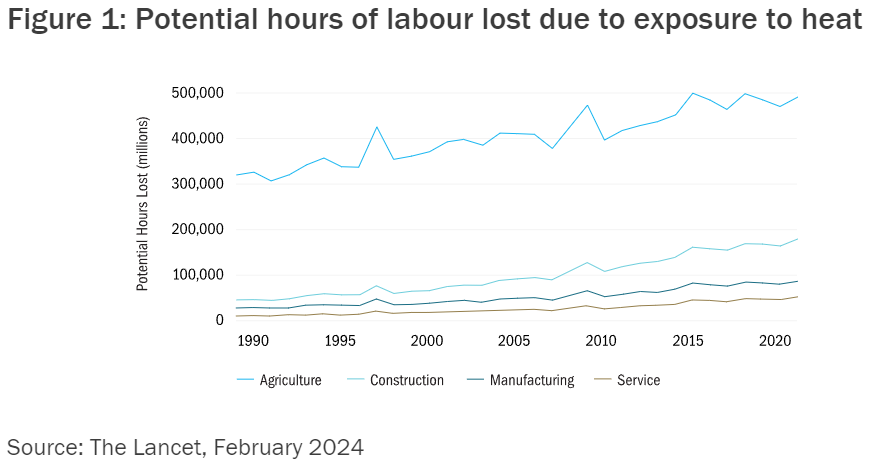Climate change impact on health and healthcare systems
Extreme weather events such as floods, heatwaves and wildfires increase the physical climate risk to healthcare systems with investment likely to be needed in more resilient infrastructure. We are already seeing evidence of this need, for instance, Cigna, a global health services organization, with operations and facilities in geographical areas subject to natural hazards and extreme weather events, reported an approximate loss of $1.5 million in direct physical and business operation loss cost over a 3-year period1.
Furthermore, healthcare providers and drug manufacturers will need to think about how to meet a changing and growing demand in care as a result of climate change. For instance, the spread of infectious diseases – for example if global mean temperatures continue to rise just under 2 degrees, the transmission potential for dengue fever increases by 36-37% by 20502, and the conditions for the spread of existing and novel pathogens increases. Care facilities will also need to ensure their medical staff is adequately trained to better understand, diagnose, and treat climate-related disease such as heat stroke – often misdiagnosed for a ‘normal’ stroke – which could mean higher costs at a time when many healthcare providers are at risk of staff shortages and tight budgets.
Heat stress is impacting workforce productivity
Beyond the direct impacts to the health sectors, higher global temperatures and more frequent heatwaves are increasingly straining the global workforce. The effects of heat stress are particularly a risk for sectors that depend on outdoor and labour-intensive work like agriculture and construction or manufacturing in poorly cooled or ventilated facilities.
As depicted in Figure 1, between 1990 and 2022, the potential labour hours lost in the agriculture, construction, manufacturing, and service sectors due to heat exposure have increased by c53% to 490 billion hours3.
With 2023 being the hottest year recorded and predictions that 2024 will be another record-breaking year, it could be worth considering how heat stress is impacting the labour force, particularly among the most high-risk sectors and supply chains, with a commensurate potential increase in cost of production or investment required in mitigation such as air-conditioning and ventilation systems.






Diesen Beitrag teilen: